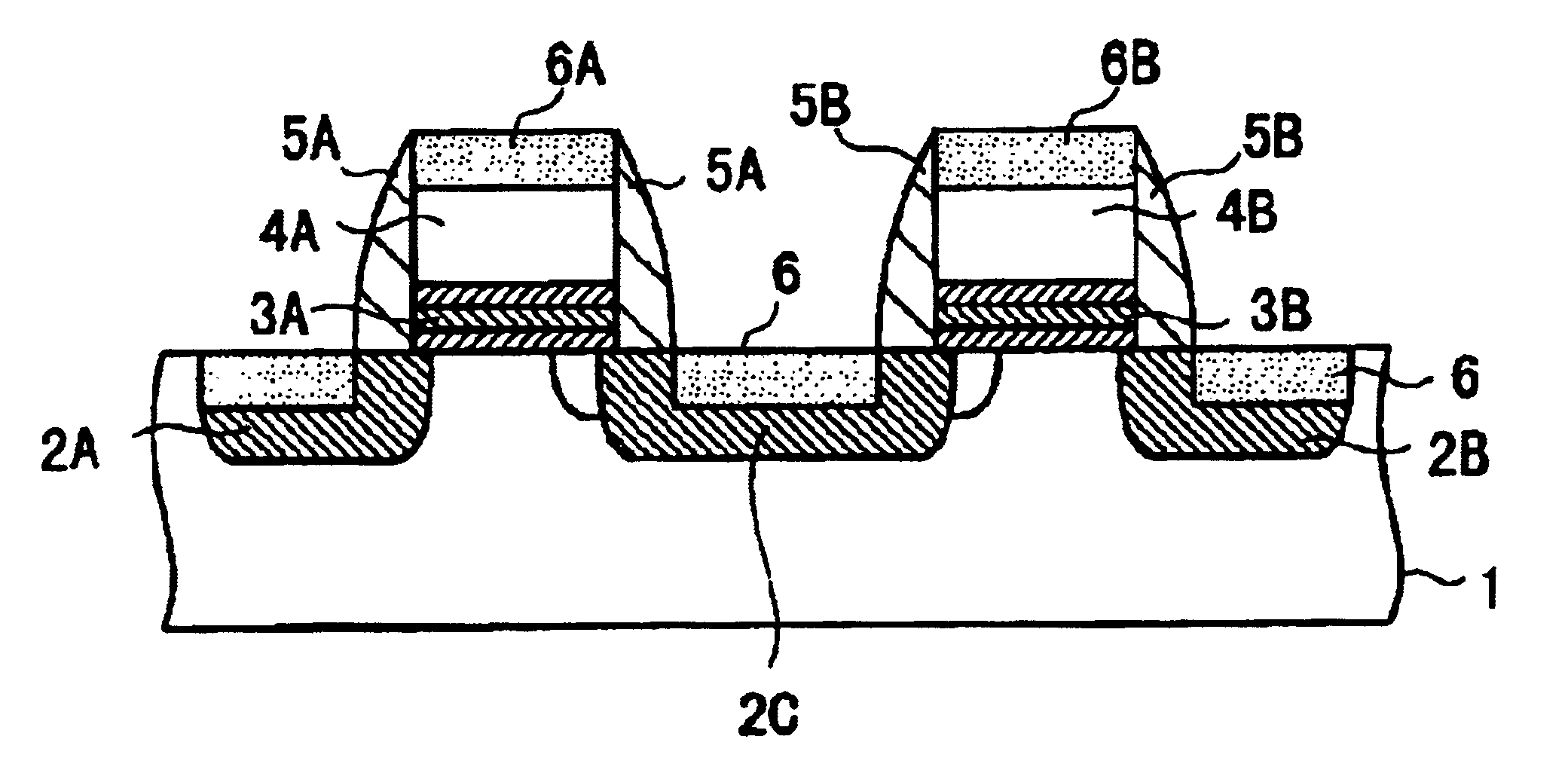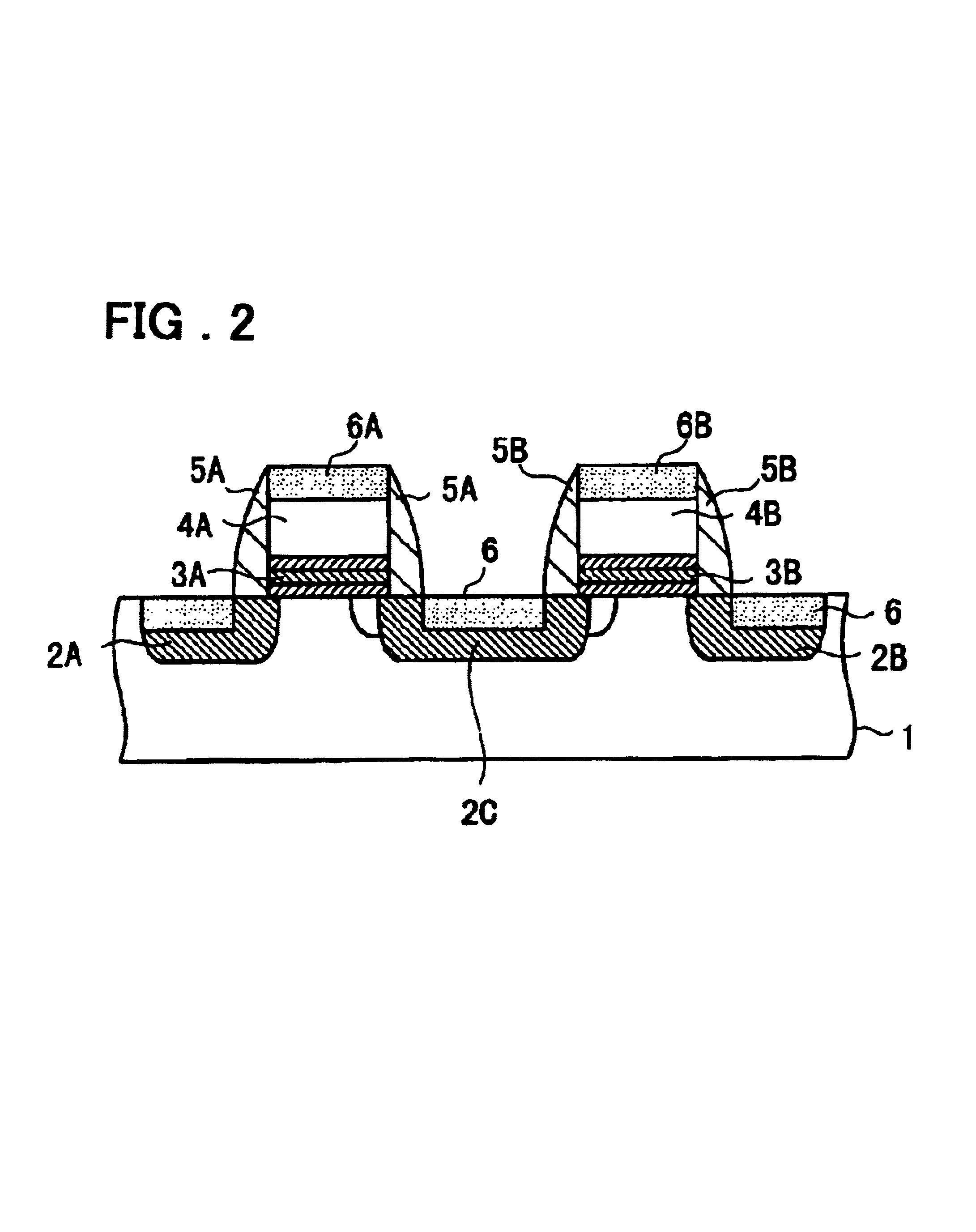Semiconductor memory device and control method and manufacturing method thereof
a semiconductor memory and semiconductor technology, applied in semiconductor devices, transistors, instruments, etc., can solve the problems of difficult processing of difficult application of salicide process, and difficulty in manufacturing structure in view of process technology, so as to reduce the voltage necessary for program operation, facilitate salicidation, and reduce memory cell size
- Summary
- Abstract
- Description
- Claims
- Application Information
AI Technical Summary
Benefits of technology
Problems solved by technology
Method used
Image
Examples
Embodiment Construction
[0076]The preferred embodiment modes of the present invention will be described. In a semiconductor memory device according to an embodiment of the present invention, a cell array has a layout configuration in which each four memory cells shares one contact region and is arranged in an X pattern with the contact region being a center thereof. Referring to FIG. 1, two mutually adjacent memory cells connected to a common word line include first, second and third diffusion regions (2A, 2C, and 2B) provided in a substrate surface and separated to one another, a first insulating film (3A) provided on the substrate to cover a region between the first and second diffusion regions (2A and 2C), a first gate electrode (4A) provided on the first insulating film (3A), a second insulating film (3B) provided on the substrate between the second and third diffusion regions (2B and 2C), and a second gate electrode (4B) provided on the second insulating film (3B).
[0077]A memory cell including the fir...
PUM
 Login to View More
Login to View More Abstract
Description
Claims
Application Information
 Login to View More
Login to View More - R&D
- Intellectual Property
- Life Sciences
- Materials
- Tech Scout
- Unparalleled Data Quality
- Higher Quality Content
- 60% Fewer Hallucinations
Browse by: Latest US Patents, China's latest patents, Technical Efficacy Thesaurus, Application Domain, Technology Topic, Popular Technical Reports.
© 2025 PatSnap. All rights reserved.Legal|Privacy policy|Modern Slavery Act Transparency Statement|Sitemap|About US| Contact US: help@patsnap.com



